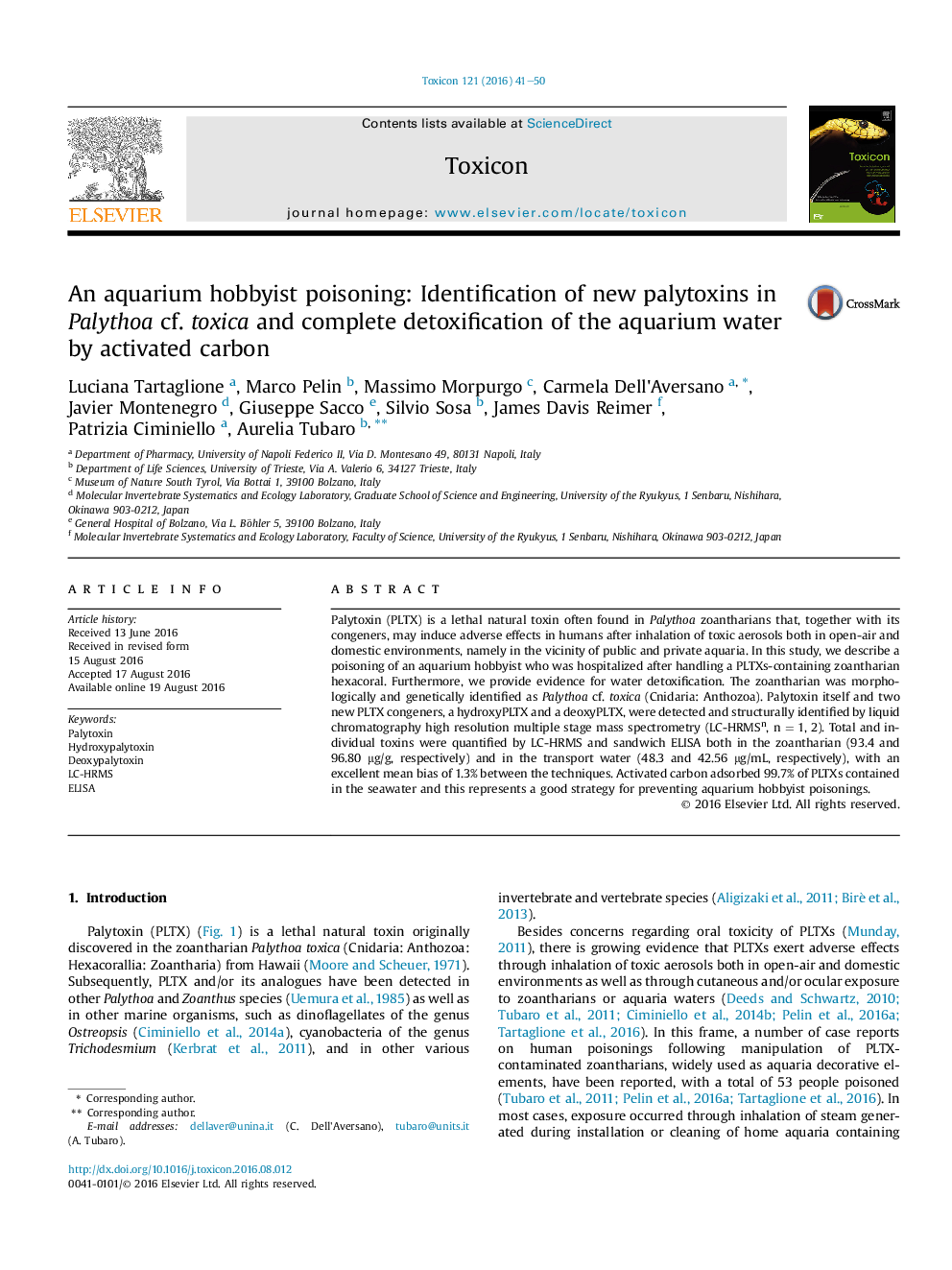| Article ID | Journal | Published Year | Pages | File Type |
|---|---|---|---|---|
| 2063949 | Toxicon | 2016 | 10 Pages |
•Inhalatory poisoning of aquarium hobbyist during cleaning of a home aquarium.•New palytoxins identified in Palythoa cf. toxica causing human poisoning.•Activated carbon adsorbs 99.7% of palytoxins from aquarium seawater.
Palytoxin (PLTX) is a lethal natural toxin often found in Palythoa zoantharians that, together with its congeners, may induce adverse effects in humans after inhalation of toxic aerosols both in open-air and domestic environments, namely in the vicinity of public and private aquaria. In this study, we describe a poisoning of an aquarium hobbyist who was hospitalized after handling a PLTXs-containing zoantharian hexacoral. Furthermore, we provide evidence for water detoxification. The zoantharian was morphologically and genetically identified as Palythoa cf. toxica (Cnidaria: Anthozoa). Palytoxin itself and two new PLTX congeners, a hydroxyPLTX and a deoxyPLTX, were detected and structurally identified by liquid chromatography high resolution multiple stage mass spectrometry (LC-HRMSn, n = 1, 2). Total and individual toxins were quantified by LC-HRMS and sandwich ELISA both in the zoantharian (93.4 and 96.80 μg/g, respectively) and in the transport water (48.3 and 42.56 μg/mL, respectively), with an excellent mean bias of 1.3% between the techniques. Activated carbon adsorbed 99.7% of PLTXs contained in the seawater and this represents a good strategy for preventing aquarium hobbyist poisonings.
Graphical abstractFigure optionsDownload full-size imageDownload as PowerPoint slide
